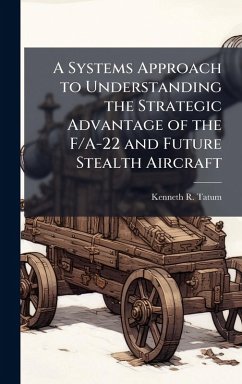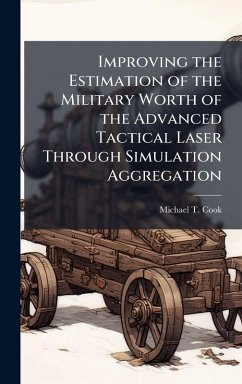
Advanced Strategic and Tactical Infrared Expendables
Versandkostenfrei!
Versandfertig in über 4 Wochen
25,99 €
inkl. MwSt.
Weitere Ausgaben:

PAYBACK Punkte
13 °P sammeln!
Infrared (IR) flare design was not a strategic player in US defense until the mid 1990s. Prior to 1995 the primary focus was on radio frequency (RF) flares for piloted aircraft. 1993 saw the establishment of a funded Program Management Directive (PMD) explicitly directing the need for advanced IR capabilities implemented in "field operations". The program for Advanced Strategic and Tactical Infrared Expendables (ASTE) was formalized on 5 April 1995 with certification of an Operational Requirements Doctrine (ORD). ASTE set out to work with contractors to develop this emerging technology with ag...
Infrared (IR) flare design was not a strategic player in US defense until the mid 1990s. Prior to 1995 the primary focus was on radio frequency (RF) flares for piloted aircraft. 1993 saw the establishment of a funded Program Management Directive (PMD) explicitly directing the need for advanced IR capabilities implemented in "field operations". The program for Advanced Strategic and Tactical Infrared Expendables (ASTE) was formalized on 5 April 1995 with certification of an Operational Requirements Doctrine (ORD). ASTE set out to work with contractors to develop this emerging technology with aggressive vigor - quite possibly too aggressive for its own good. The design was a simple one, or so they thought. Previous models and dispensing systems were already in place. No one planned for the intensity of the next four years, achieving a Full Rate Production (FRP) contract for only one out of four flares being developed. The extreme complexity of technical mishaps experienced during the Engineering, Manufacturing, and Design phase (MS II, now early MS B) was not a foreseen performance obstacle for engineers and program schedulers. As the 1997 FRP date slipped farther and farther to the right, ASTE's ideal defense technology was not favorably looked upon, creating a ripple effect of significant cost growth and schedule slips throughout the program. This case study takes a look at the problems contributing to the delayed delivery of IR flares and its impact to meeting warfighter needs under constraints brought about by government acquisition policies. Funded with a modest budget, ASTE is only a small representation of the greater Electronic Warfare (EW) programs our military elects to fund over multiple years. Yet, even a small program can offer significant impact to overall government lessons learned in acquisition and budgeting planning and processes This work has been selected by scholars as being culturally important, and is part of the knowledge base of civilization as we know it. This work was reproduced from the original artifact, and remains as true to the original work as possible. Therefore, you will see the original copyright references, library stamps (as most of these works have been housed in our most important libraries around the world), and other notations in the work. This work is in the public domain in the United States of America, and possibly other nations. Within the United States, you may freely copy and distribute this work, as no entity (individual or corporate) has a copyright on the body of the work. As a reproduction of a historical artifact, this work may contain missing or blurred pages, poor pictures, errant marks, etc. Scholars believe, and we concur, that this work is important enough to be preserved, reproduced, and made generally available to the public. We appreciate your support of the preservation process, and thank you for being an important part of keeping this knowledge alive and relevant.












